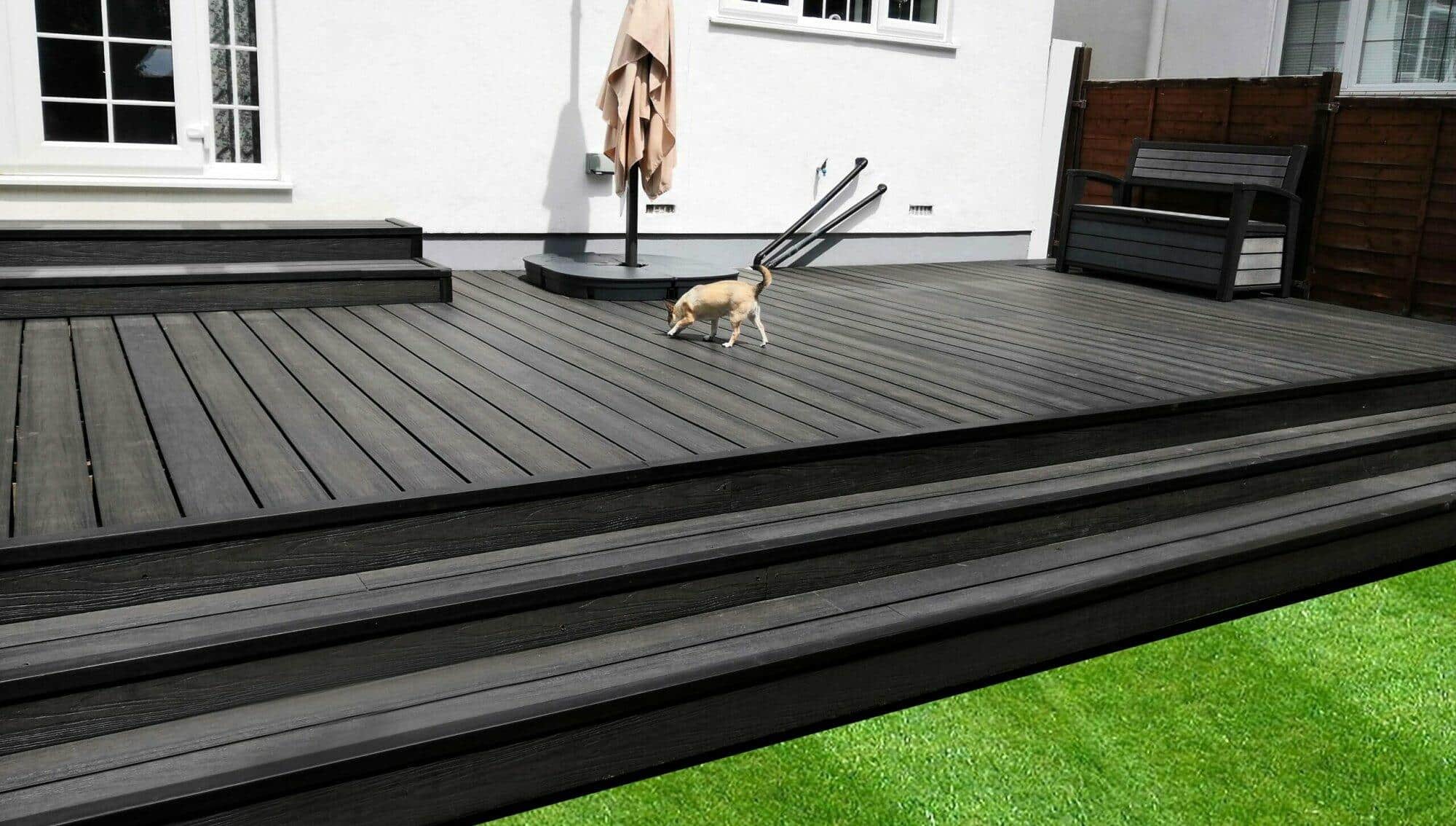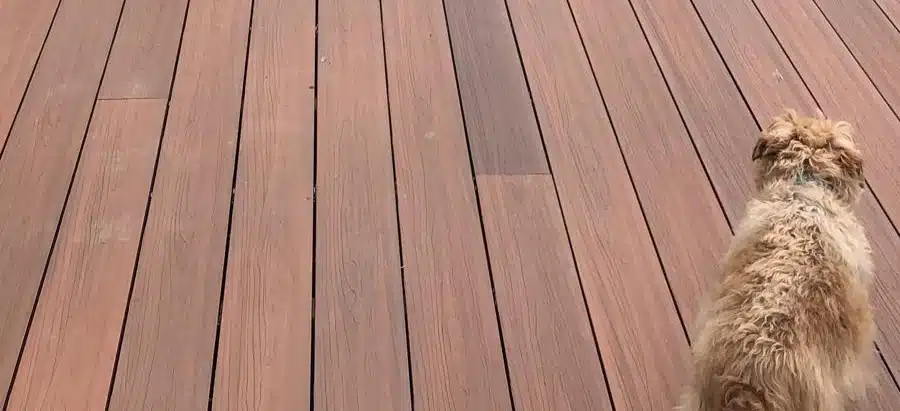How to Protect My Deck from My Dog?
Whether you have existing flooring in your exterior space or just want to install decking onto your grass, you can install composite decking in your garden to enhance your space. Within this article, we will answer frequently asked customer questions on how to lay composite decking on grass-utilising posts. Additionally, we have created a step-by-step guide on laying decking on grass for your convenience.
FAQs from customers
Does it require digging?
Yes, when installing composite decking, you will need to dig up the grass to create an even surface free of debris. Additionally, you will also need to dig holes that your posts will sit in. posts are essential in order to stabilise your decking. Therefore, you will require a shovel to complete this project.
Do I need weed membrane?
Weed membrane is used to protect the area under your decking from weed growth. It is the least harmful and most effective measure that can be used. It is not a necessity. However, it is strongly recommended to prevent weeds from growing through your decking.
Do I need to remove my grass before installation?
Yes, you will need to remove the area you are installing your composite decking from any grass or debris. You will need to dig up the grass in order to create a surface that you can build. This is to stop grass from growing through the decking boards, which would prevent airflow and drainage for the decking, leading to damage on your decking boards, such as warping and cracking. Trapped moisture also leads to mould and mildew, which not only alters the aesthetic of the decking but affects the structural integrity of the boards.
Do I need posts to lay decking on grass?
Yes, you will need to use posts when installing composite decking on grass. You cannot use pedestals, as they can only be utilised on a solid, even surface. Your posts can be made from various materials, such as composite, timber or aluminium. You will need to sink your posts into the ground using a concrete mix, sinking a quarter of the post into the ground for stability. Remembering that your posts need to create a slight gradient of 2.5% to allow for a surface runoff on the decking surface. The higher your posts, the deeper the holes need to be to ensure extra stability.
Is it safe to build decking on grass?
With accurate stability from sunken posts, building decking on a soft surface such as soil is safe. It is imperative to build an accurate subframe structure in order to provide your decking with the best stability and durability possible. This will ensure a safe decking for both you and your family for decades to come. If you are unsure about any aspect of the installation process, or you have no experience in constructing decking, we recommend hiring a professional to complete the project for you to make sure your decking is accurate and safe.
Step-by-step guide
Tools required
- Drill
- Saw
- Screwdriver
- Tape measure
- Spirit level
- Power metre saw
- shovel
Clear the area of any debris
Firstly, you will need to clear the area of any grass or debris to ensure a clear surface on which to build your substructure. Considering the location of your decking in your outdoor space can affect the level of maintenance required in order to retain the appearance of your decking. For example, if you are placing your decking underneath trees, this will mean more accumulation of debris on your decking boards. Please note when building near or around a tree, stay at least 500mm away and do not fix to the tree.
Dig up any grass, ensuring a clear area to be able to build your posts onto. This ensures no grass will grow up through your decking boards, compromising the drainage and airflow. So, not only will this stop grass from altering the appearance of your decking, but from damaging the structural stability of your decking.
Posts
The most important part of building decking on a soft surface, such as soil, are the posts that support the decking’s stability. You will need to dig holes 1.5m apart and 700mm deep to place your posts in. Put gravel or stones in the bottom of your holes to help with drainage, its also recommend to place your posts on brick to raise them from the ground, if so use engineered bricks or use a post sleeve, this will help to prolong the post life span. Next, pour your postcrete mix and water into the hole to stabilise the posts in place, using a spirit level to ensure an accurate vertical post throughout the process. Allow the mix to dry. To stabilise your posts even further, you can screw batons at an angle into the post. If you notice that the base around the post is flat, its a good idea to taper the the surrounding post (curve the around surrounding your posts) to enable the water to run off and not pool around your post, this will help with prolonging the post life span.
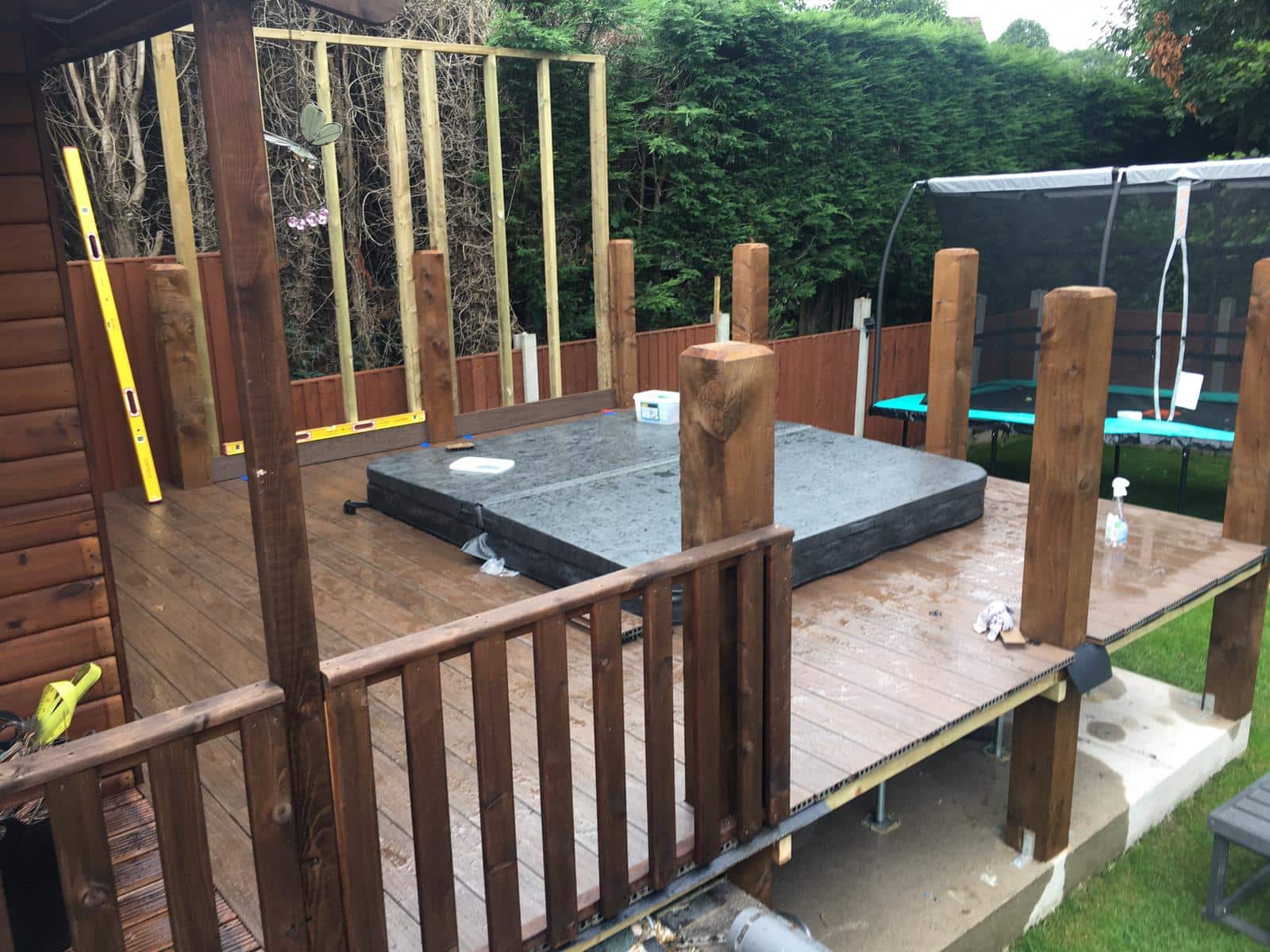
Building the frame
Build the substructure using either composite or timber joists, in a grid-like structure with joist centres of 300mm spaced apart. Saw your joists to size using your power mitre saw. Use joist hangers to screw the joists to the posts, its advisable to use noggins to add each support. If you are using a composite joist, you must leave a 10mm gap between the joists to allow for thermal expansion. Complete this process before your decking frame is completed.
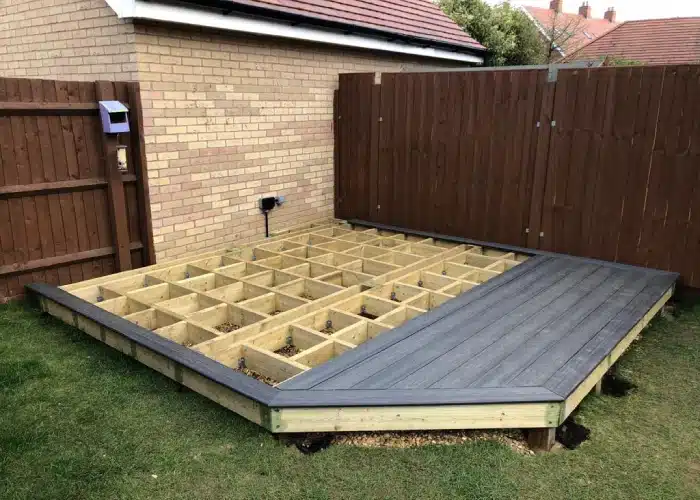
Remember to measure correctly.
Laying the boards out before installation is a great practice to help. The main purpose of this will not only give you an idea of your decking project finish look beforehand but will also show where two boards can meet end to end, and you will require a double joist to correctly secure your boards for strength and stability.
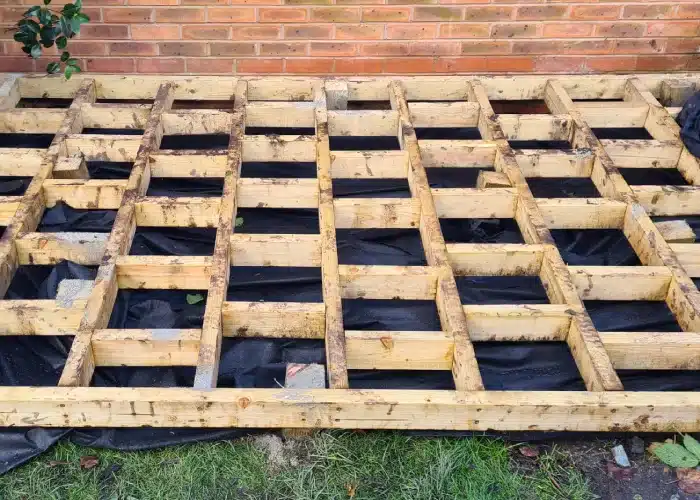
Lay your boards of choice
Once your frame is accurately completed, you can begin the process of laying your decking boards. If you are using composite decking boards, utilise your hidden fastener system to lay your boards. Starting with your starter clips for your initial boards, then moving on to hidden fasteners to finish the project.
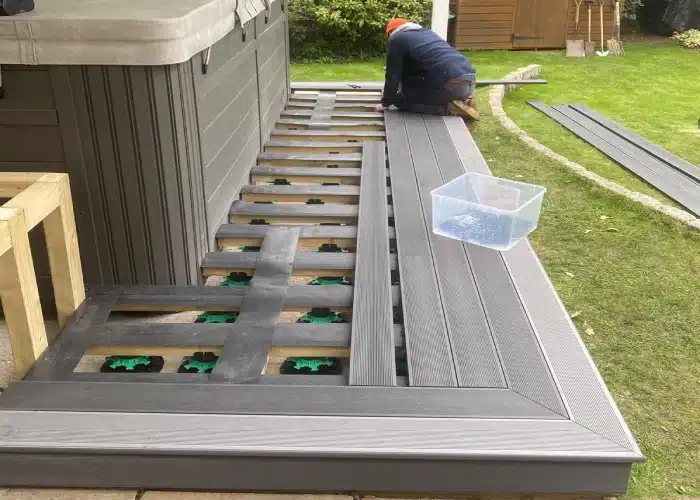
Lay your boards with the correct gap
When laying your boards, you need to leave a gap of at least 3mm side to side and 6mm end to end between the boards to allow for thermal expansion. If the boards are placed too close together or incorrectly, this will lead to damage to your decking as they will expand and contract in climate changes and without room to do so, they will bump into each other, causing cracking and splitting.
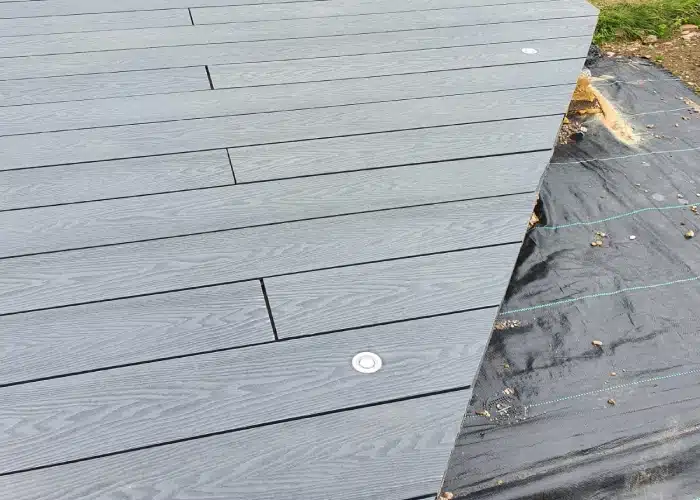
Finish your project
Now, you can finish your decking edges, using a fascia if you wish to do so or decking trims to cover the edges of the boards. There are multiple ways you can finish a decking, depending on your preference and style.
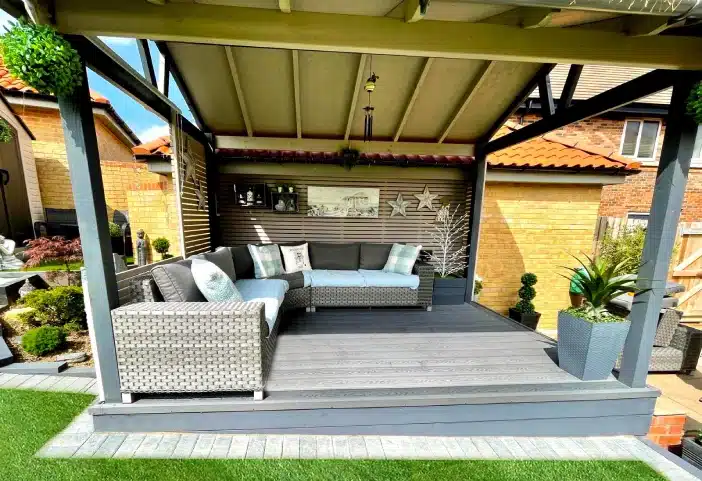
To summarise, you can build decking on a soft surface such as soil. You will need to utilise posts in order to stabilise your decking, ensuring durability for you and your family to enjoy your decking for years to come. Remember to ask your supplier or board manufacturer if you have any concerns with the process, or alternatively, hire a professional to complete your project for you.
Composite Decking and Dog Urine



